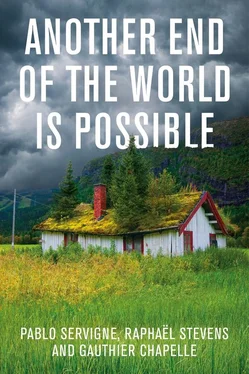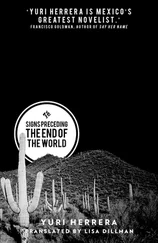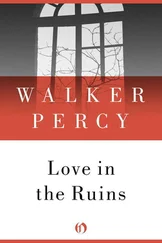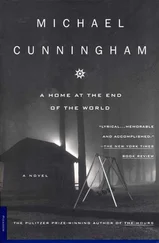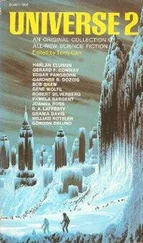In recent years, we have enriched our own scientific project through more awareness of human feeling and subjectivity, and this has led us to become involved with ethical, spiritual and metaphysical issues. We think that these are also part of the ‘first aid kit’ that we will need to open as we face this storm of unpredictable duration. Dominique Bourg, the French philosopher who wrote the Foreword to this book, says much the same in different words in his own book, A New Earth : 28the only choice we have left to us is to rethink our way of seeing the world, in other words, of being in the world.
We propose using the term ‘collapsosophy’ (from ‘-sophy’ = wisdom) for the whole body of behaviours and positions that arise out of this unavoidable situation (the collapses that are taking place and of the possible global collapse) and which depart from the strict domain of the sciences. The same process of opening out and of breaking down walls that is involved in collapsology is found here too, in a broader opening to questions of ethics, the emotions, and the imagination, and to spiritual and metaphysical questions. We do not aim to choose any particular camp, more to look for complementarities and connections which can be woven between all these areas, so as to help us in undergoing these external and internal transformations.
We are aware that this is not the usual approach in the scientific and political world (or at least it is not discussed openly), and that it can cause discomfort as well as enthusiasm. But it seems to us that we cannot do without it. To quote the American writer John Michael Greer: ‘The recognition that these two transformations, the outer and the inner, work in parallel and have to be carried out together is the missing piece that the sustainability movements of the Seventies never quite caught.’ 29He also notes that ‘it’s not the technical dimension of the predicament of industrial society that matters most just now. It’s the inner dimension, the murky realm of nonrational factors that keep our civilization from doing anything that doesn’t make the situation worse, that must be faced if anything constructive is going to happen at all.’ 30
In these uncertain times, the voices of scientists are more important than ever. It is time for them to redouble their efforts and the rigour of their work, but also to find the courage to speak with their hearts, and to engage fully in the challenges that face us, with all the subjective and personal factors which that implies. Some of them are doing it already, for example the astrophysicist Hubert Reeves in the 2018 French-Canadian documentary by Iolande Cadrin-Rossignol, La Terre vue du coeur ( Earth: Seen From the Heart ). 31
The disasters that lie ahead of us may lead to the suffering and even death of thousands or millions of human beings in ways that can easily be foreseen … not counting the other living species. If we shut ourselves off from all of this and look towards the future without compassion, we risk losing both any reason to live and our own humanity. If, in contrast, we take the decision to plunge body and soul into our coming predicament, with compassion and courage, then we need to learn to equip ourselves materially, emotionally and spiritually, in order to avoid madness, or again losing our empathy for the suffering around us. The idea of this book is to explore the changes that we can make inside our heads and our hearts, in order to be able to work with the world of our time. Or, as Carolyn Baker puts it, ‘we must ask: Who do I want to be in the face of collapse? What did I come here to do?’ 32
It has already been some years since we formed the desire to make as many people as possible come to understand the scientific work on this subject. We haven’t yet lost our spirits, or hope, or our reason. We appreciate now that going beyond the strict scientific framework has been a great help for us on this journey. It has even been a source of joy.
Both the partial collapses that are taking place already and the possible systemic collapses of the future are opportunities for transformation. We remain convinced that it is possible to understand, to speak and to live the catastrophes and the sufferings that they generate without giving up joy or the possibility of a future.
This book tells of our discoveries in the fields of disaster psychology but also of our encounters on the paths of ‘collapsosophy’. It is aimed at people who want to navigate this balance of light and dark, without giving up their clarity of vision or their sense of reality, but also without renouncing their sense of a future which may be joyful, and in any case is of this earth . Because the question asked by Bruno Latour is the question of our generation:
Do we continue to nourish dreams of escaping, or do we start seeking a place on the earth that we and our children can inhabit? Either we deny the existence of the problem, or else we look for a place to land , to come to earth. From now on, this is what divides us all, much more than our positions on the right or the left side of the political spectrum. 33
In this book, we report on streams of thought that may be unfamiliar to many readers. We also make connections between areas that may at first seem to have nothing to do with each other. We are aware that this could upset some people. Reading these pages will ask of you a spirit of openness, curiosity and understanding. But this is the nature of a transdisciplinary enterprise (see chapter 4).
This attitude of openness also involves a mistrust of the taken-for-granted labels, clichés and caricatures that are used mainly to discredit: survivalist, snowflake, fascist, leftist, new age, mystic, etc. These labels should not prevent us from looking at the complexity (or the emptiness) that may be hidden behind them.
Treat this book as a visit to a huge wild vegetable garden. Feel free to walk around and pick up what you like, or to learn about what you do not know. There is colour and life, there are fruits ready to pick and connections which still can’t be seen. And like the Kogi Indians, fill two saddlebags. Fill the one on the right with what speaks to you and suits you; fill the one on the left with what you disapprove of or what seems irrelevant today, so that you can come back to it later.
In the first part of the book, we explore the impact that the coming disasters may have on our mental health, as well as the ways in which we can recover. How do we absorb this news and this understanding? How do we get used to living with it, over the coming decades? How should we announce it to those around us? Do hope and optimism still make sense?
In the second part, we explore three ways of changing our outlook on the world, so as to help us find meaning, or at least to step aside a little. Why and how can we change our relationship to science and knowledge? Why and how can we open ourselves up to other ways of seeing the world developed by other cultures which are less ‘thermo-industrial’? More generally, isn’t it time to change the stories we tell ourselves?
And in the third part, we enter more deeply into ‘collapsosophy’. We start by approaching the essential question of the connections which we shall need to weave with ourselves, between ourselves, and with other living beings. Then we open up to questions that give meaning to our time and to our lives: the process of growing up and ‘becoming an adult’, the male–female relationship, the return to the wild, and the ways in which we can go through all of this together.
The impetus of this book is to explore, beginning from the knowledge, experiences and intuitions which each person already has. It is to share the joy of learning further, to provoke moments of realization, to explore our shadows, to meet with people who take us out of our comfort zone, to begin a dialogue with trees, rivers and salamanders, to accompany each other through suffering and mourning, and to participate together in the emergence of what is going to happen.
Читать дальше
